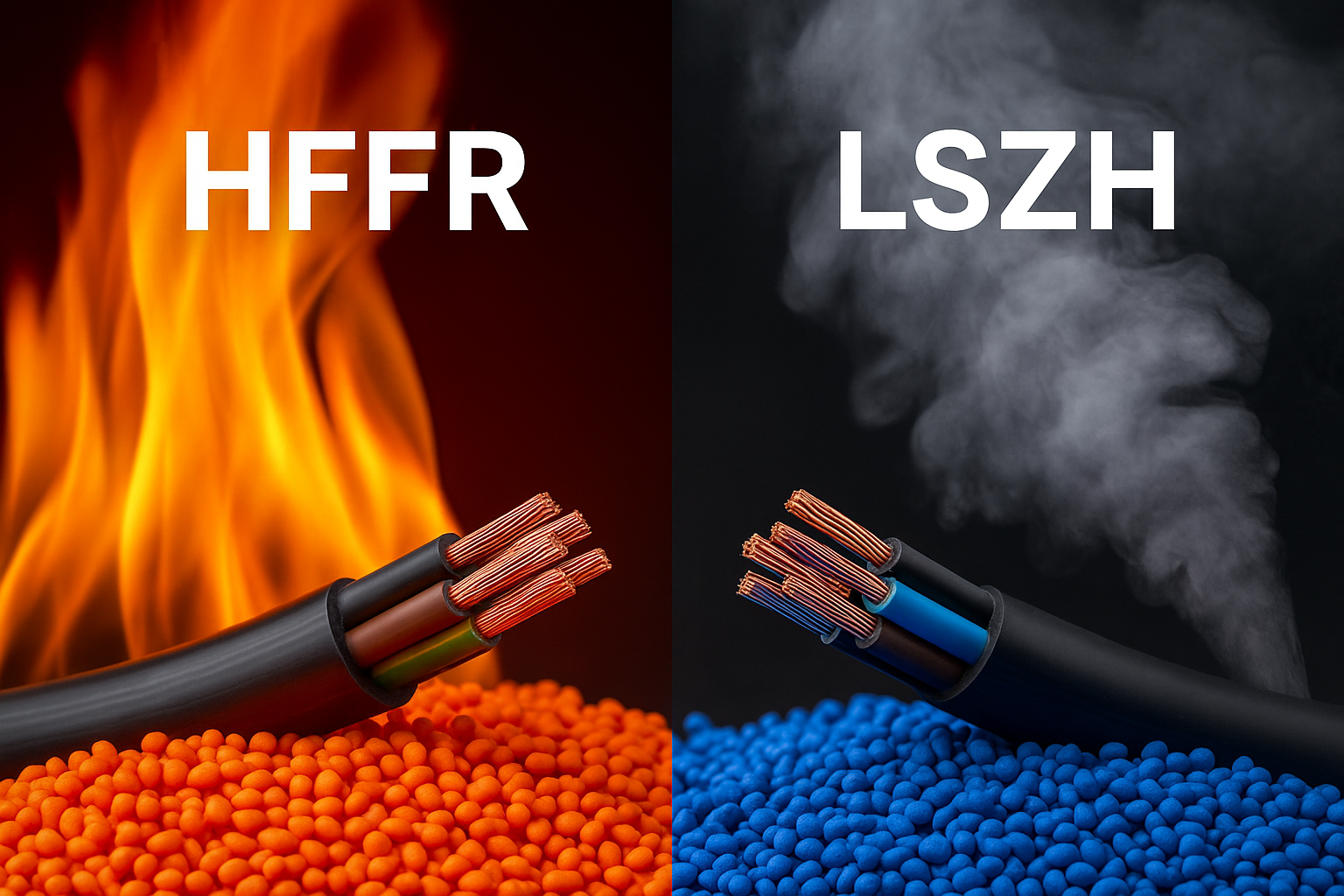LYS Polychem Blog

Differences Between HFFR and LSZH: Which Cable Should Be Used Where?
In the cable industry, safety, performance, and environmentally friendly solutions are the most critical priorities. At this point, two important insulation materials stand out: HFFR (Halogen Free Flame Retardant) and LSZH (Low Smoke Zero Halogen). Both offer fire safety and environmental advantages, but they differ significantly in terms of their applications and technical characteristics. So, what are the differences between HFFR and LSZH, and which one should be preferred for which application?
What is HFFR?
HFFR (Halogen Free Flame Retardant) means halogen-free flame retardant compound. When used in cable insulation:
- Limits the spread of flames
- Does not contain halogen gas
- Provides low toxicity during a fire
HFFR is preferred especially in energy and telecommunication cables that require high safety.
What is LSZH?
LSZH (Low Smoke Zero Halogen) during a fire:
- Emits low-density smoke
- Does not release any halogen gas
- Does not create toxic or corrosive effects that could harm human health or electronic devices
LSZH cables are generally preferred in enclosed spaces and areas with high human density.
Key Differences Between HFFR and LSZH
Which Cable Should Be Used Where?
HFFR Cables:
- Power cables
- Telecom cables
- Industrial facilities
- Outdoor applications
LSZH Cables:
- Hospitals and healthcare facilities
- Subways, tunnels, and airports
- Office buildings
- High-density enclosed spaces
Both HFFR and LSZH provide safety and environmental advantages in cable insulation. However, the application area, cost, safety requirements, and standards must be considered when making a selection.
LYS Polychem offers cable manufacturers safe, high-quality, and environmentally friendly alternatives with HFFR and LSZH compound solutions that comply with international standards.